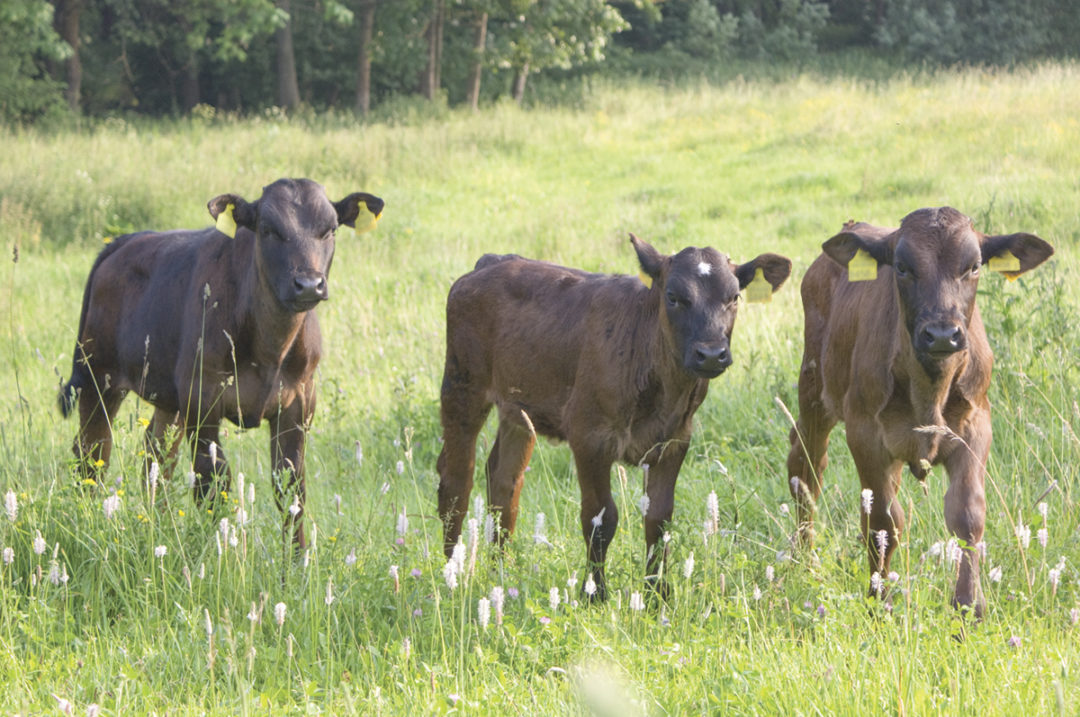Winter backgrounding systems can vary greatly from backgrounding in a drylot to grazing cornstalks or native range. Calves winter-backgrounded at a low rate of gain typically experience compensatory gain during the summer grazing period. While this compensatory gain can be more cost-effective through reduced winter feed costs, it does not typically result in the heaviest bodyweight at the end of the summer grazing season. Some common questions that producers often have during this winter growing phase include:
- What is the optimum rate of gain?
- What implant strategy should be used (and is on-label with new reimplanting regulations) during the winter backgrounding and/or summer grazing phases?
- How does winter rate of gain and implant strategy during the stocker/yearling phase influence finishing performance and carcass characteristics?
In an effort to evaluate the potential compensatory effects of winter rate of gain and implant strategy across the entire production system, a recent two-year study by the University of Nebraska addressed these questions.
Winter rate of gain
Steer calves were backgrounded in a drylot for 148 days, with a target rate of gain of either 1 pound per day (low rate of gain) or 2 pounds per day (high rate of gain). The diet consisted of smooth bromegrass hay, modified distillers grains and a supplement, which provided 200 milligrams per head daily of monensin. During the summer grazing period, steers rotationally grazed smooth bromegrass pasture for 56 days.
As expected, steers wintered at a low rate of gain had greater gains on grass due to compensatory gain. However, steers wintered at a high rate of gain maintained heavier bodyweights through the summer grazing period.
Implant strategy
Calves received one of three implant strategies, which are on-label reimplantation procedures: (1) none, (2) Revalor-G during the summer grazing period or (3) Ralgro during winter backgrounding and Revalor-G during summer grazing. All cattle were implanted with Revalor-XS during the finishing phase.
For steers backgrounded at a low rate of gain, those that were not implanted compensated by 21% to 23% during summer grazing, while those implanted with Ralgro only compensated 9%. However, Ralgro increased gains by 11.4% and resulted in an additional 26 pounds of bodyweight at the end of the winter backgrounding phase. During the summer grazing period, the use of Revalor-G increased gains by 17% regardless of winter rate of gain.
Finishing performance
Both winter rate of gain and implant strategy greatly influenced hot carcass weight (HCW). During the finishing phase, there were no differences in gains or feed efficiency, but steers wintered at a high rate of gain maintained heavier bodyweights and had greater HCW. For steers backgrounded at a low rate of gain, an additional 28 pounds of HCW was attributed to Revalor-G administered during summer grazing. For steers wintered at a high rate of gain, an additional 32 pounds of HCW was attributed to Ralgro administered during the backgrounding phase. The combination of a high winter rate of gain and implant during each production phase increased HCW by 75 pounds.
Summary
The use of implants improved cattle performance within each phase of production. Wintering calves at 2 pounds daily gain increased final bodyweight and HCW. For cattle in a three-phase yearling system that are wintered at 1 pound daily gain, implanting at least during the summer grazing period can be beneficial. Cattle wintered at a high rate of gain can benefit from administering an implant during each phase of production. Winter rate of gain and implant strategy have additive effects on improving performance throughout the entire production system.
This article is a summary of the 2023 Nebraska Beef Cattle Report, Timing of Implant Use in the Backgrounding System.













